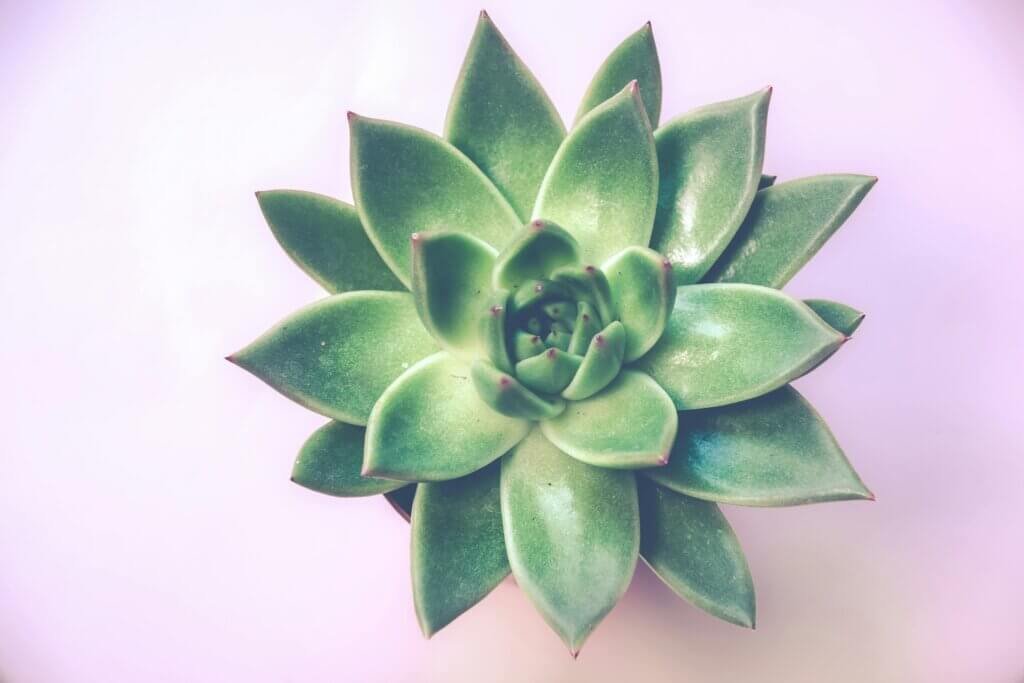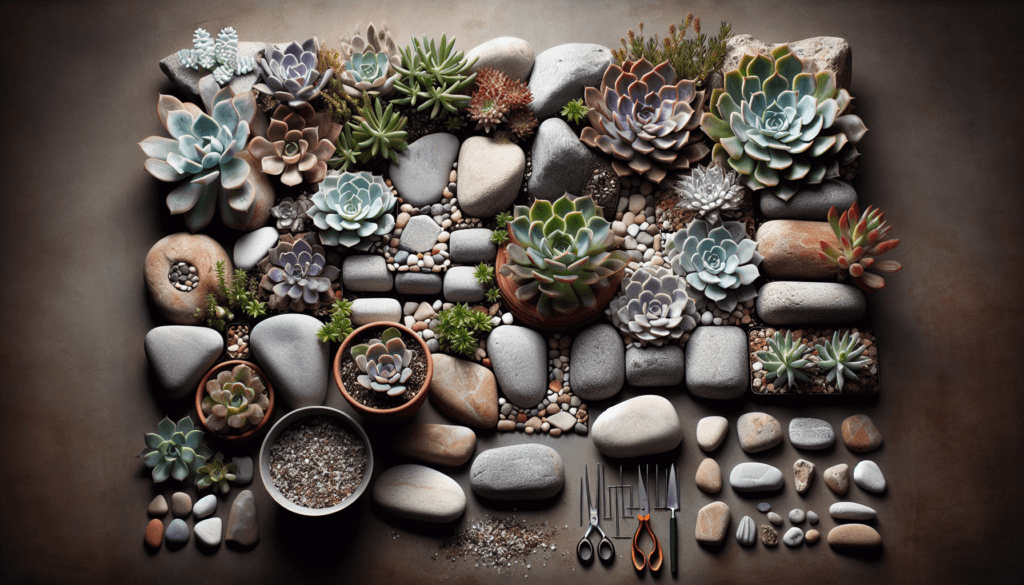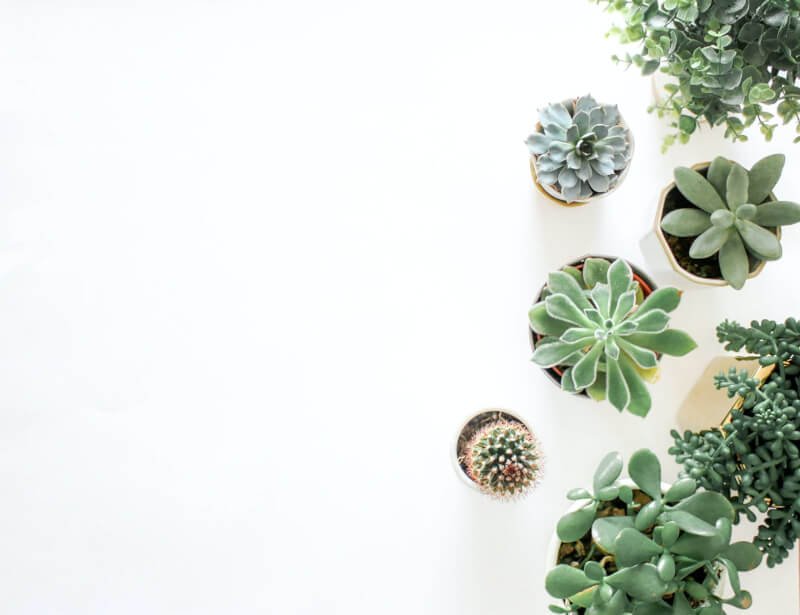Are you ready to embark on a creative journey that will transform your outdoor space into a stunning oasis? Look no further than our Beginner’s Guide to Creating a DIY Succulent Rock Garden. In this article, we will walk you through the steps and techniques needed to design and assemble your own unique succulent rock garden. Whether you have a green thumb or are a complete beginner, this guide will provide you with the knowledge and inspiration to create a beautiful and low-maintenance garden that will thrive for years to come. So, roll up your sleeves, grab your gardening gloves, and let’s get started on this exciting adventure together!

Choosing the Right Location
Assessing sunlight conditions
When choosing a location for your succulent rock garden, it’s important to assess the sunlight conditions. Succulents thrive in bright, indirect light and need at least six hours of sunlight per day to grow healthy and vibrant. Take note of how the sunlight moves across your garden throughout the day, and choose a spot that will provide ample light for your succulents.
Evaluating soil drainage
Good soil drainage is essential for the health of your succulents. Succulents are adapted to arid environments and are prone to root rot if their roots sit in waterlogged soil for too long. To evaluate soil drainage, dig a small hole in the prospective garden area and fill it with water. If the water drains away within one hour, the soil has good drainage. If the water remains for longer, consider improving the drainage by adding organic matter or creating raised beds.
Considering climate factors
Climate plays a crucial role in the success of your succulent rock garden. Different succulent varieties have varying tolerance to cold, heat, and humidity. Before selecting your succulents, research the climate requirements of each species to ensure they can thrive in your area. Consider factors such as average temperatures, humidity levels, and the presence of frost. By choosing succulents that are well-suited to your climate, you’ll increase their chances of survival.
Selecting Suitable Succulents
Researching different succulent varieties
There are thousands of succulent varieties to choose from, each with its unique characteristics and care requirements. Take the time to research different succulent varieties to find ones that align with your aesthetic preferences and gardening capabilities. Look for species that are known to thrive in rock gardens, such as Sedum, Sempervivum, and Echeveria. Consider the growth habits, colors, and textures of the succulents to create a visually appealing and diverse garden.
Identifying hardy and low-maintenance species
As a beginner, it’s best to choose succulents that are hardy and low-maintenance. Look for species that are known for their resilience and ability to withstand neglect. Some hardy succulents that are great for beginners include Agave, Crassula, and Haworthia. These succulents are forgiving and can handle occasional overwatering or forgotten watering sessions. By selecting low-maintenance succulents, you’ll have a higher chance of success with your rock garden.
Considering size and color variations
When selecting succulents, consider their size and color variations to create an aesthetically pleasing garden. Succulents come in a wide range of sizes, from tiny rosettes to tall, architectural plants. Choose a mix of sizes to create visual interest and add dimension to your rock garden. Additionally, consider the color palette you want to achieve. Succulents come in various shades of green, blue, purple, and even red. By carefully selecting a combination of colors, you can create a visually stunning and harmonious garden.
Gathering Materials and Tools
Finding suitable rocks and containers
The choice of rocks and containers is crucial for creating a successful succulent rock garden. Look for rocks that are porous and have an interesting texture. River rocks, lava rocks, and flagstones are popular choices for rock gardens. These rocks not only provide excellent drainage but also add visual appeal to your garden. When it comes to containers, consider using shallow containers or troughs that allow for proper root growth and mimic the natural environment of succulents.
Preparing the soil mix
Creating a well-draining soil mix is essential for the health of your succulents. Succulents thrive in soil that is gritty and fast-draining. Prepare a soil mix by combining equal parts of sandy loam, perlite, and coarse sand. This will create a mix that promotes healthy root growth and prevents waterlogging. Avoid using regular potting soil or garden soil, as they are too heavy and retain moisture, which can lead to root rot.
Acquiring necessary gardening tools
Before starting your succulent rock garden, ensure you have the necessary gardening tools on hand. Some essential tools include a trowel for planting, a hand rake for leveling the soil, pruning shears for maintenance, and a watering can or hose for watering. You may also need a shovel, garden gloves, and a wheelbarrow for hauling rocks or soil. Having the right tools will make the gardening process easier and more enjoyable.
Preparing the Garden Area
Clearing the site of debris and weeds
Before you can start building your succulent rock garden, it’s important to clear the site of debris and weeds. Remove any rocks, sticks, or leaves that may hinder the installation of the rocks and planting of the succulents. Additionally, get rid of any weeds or grass that may compete with your succulents for nutrients and water. Clearing the site will provide a clean and fresh canvas for your rock garden.
Leveling the ground surface
Once the site is clear of debris and weeds, it’s time to level the ground surface. Use a hand rake or a garden hoe to remove any bumps or uneven areas in the soil. Leveling the ground will ensure that your rocks and succulents sit evenly and create a visually pleasing garden. Pay attention to the overall slope of the area and make adjustments as needed to prevent water from pooling in certain spots.
Creating proper drainage
Proper drainage is essential for the health of your succulents. To create proper drainage in your rock garden, consider adding a layer of gravel or small rocks at the bottom of the planting area. This will allow excess water to flow away from the roots of the succulents, preventing waterlogging. Additionally, ensure that the soil mix you prepare is well-draining. Proper drainage will help maintain the overall health and longevity of your succulents.

Designing the Layout
Sketching a rough plan
Before placing your rocks and succulents, it’s helpful to sketch a rough plan of your rock garden. Take into account the size of your garden area and the types of rocks and succulents you have chosen. Consider the overall layout, pathways, and any focal points you want to create. Sketch out the general arrangement of the rocks and where you want to position the different succulent varieties. A rough plan will serve as a guide during the installation process.
Considering visual balance and focal points
When designing your rock garden layout, it’s important to consider visual balance and focal points. Aim for a balanced composition by distributing the rocks and succulents evenly throughout the garden. Create focal points by grouping together rocks of different sizes or positioning a larger succulent as a centerpiece. These focal points will draw the eye and add interest to your garden. By carefully considering visual balance and focal points, you can create a visually appealing and harmonious rock garden.
Arranging rocks and succulents
With your rough plan in hand, it’s time to start arranging the rocks and planting the succulents. Begin by placing the larger rocks first, positioning them according to your desired layout and focal points. Once the rocks are in place, dig holes in the soil mix to accommodate the root balls of the succulents. Gently place the succulents into the holes and backfill with soil, ensuring that the plants are well-supported. Continue arranging the rocks and planting the remaining succulents until your rock garden takes shape.
Planting Succulents in Rocks
Prepping the succulents for transplantation
Before planting your succulents in the rocks, it’s important to prepare them for transplantation. If your succulents are currently in pots, gently remove them from the pots and carefully loosen the soil around the root ball. If the roots are tightly packed, gently tease them apart to encourage root growth in the new planting area. If you’re working with bare-root succulents, soak them in water for a few hours to rehydrate them before planting.
Creating well-draining pockets in rocks
One of the unique aspects of a succulent rock garden is the opportunity to plant succulents directly in the rocks. To create well-draining pockets in the rocks, carefully chisel or carve out cavities that are deep enough to accommodate the root balls of your succulents. These cavities will allow water to drain freely, preventing root rot. Take care not to damage the rocks or the roots of the succulents while creating the pockets.
Positioning and planting the succulents
Once you have created the well-draining pockets in the rocks, carefully position the succulents in the cavities. Gently press the soil mix around the roots to secure the plants in place. Ensure that the succulents are positioned securely and that their roots are in contact with the soil mix. Take your time while planting to ensure that each succulent is properly placed and supported. Once all the succulents are planted, water thoroughly to help them settle into their new homes.

Watering and Care
Establishing a watering routine
Watering is a crucial aspect of succulent care, but it can be challenging to strike the right balance. As a general rule, water your succulents only when the top inch of soil is dry. Stick your finger into the soil to determine its moisture content. When watering, thoroughly saturate the soil and let the excess water drain away. Avoid frequent, shallow watering, as this can lead to shallow root growth and increased susceptibility to root rot.
Avoiding overwatering succulents
Overwatering is one of the most common mistakes when it comes to succulent care. Succulents store water in their leaves, stems, and roots, allowing them to survive in arid conditions. Therefore, they are adapted to periods of drought and don’t require frequent watering. Overwatering can lead to root rot and other problems. Always err on the side of underwatering rather than overwatering, as succulents are more likely to recover from underwatering than overwatering.
Fertilizing and monitoring plant health
Succulents generally don’t require much fertilization, especially if they’re planted in a nutrient-rich soil mix. However, you can give them a boost of nutrients during the growing season by applying a diluted, balanced succulent fertilizer. Follow the instructions on the fertilizer package and use it sparingly, as succulents are sensitive to excess nutrients. Monitor the health of your plants regularly by checking for signs of pests, diseases, or nutrient deficiencies. Catching any issues early will allow for prompt intervention and treatment.
Dealing with Pests and Diseases
Identifying common succulent pests
While succulents are relatively pest-resistant, they can still fall victim to common garden pests. Some common pests that may affect succulents include aphids, mealybugs, spider mites, and scale insects. Regularly inspect your succulents for any signs of pests, such as sticky residue, webbing, or small insects on the leaves. Identifying pests early on will allow you to take appropriate measures to control their population and prevent significant damage to your plants.
Using natural pest control methods
When it comes to controlling pests on your succulents, it’s best to opt for natural and organic methods. Avoid using harsh chemical pesticides, as they can harm beneficial insects and disrupt the natural balance of your garden. Instead, try methods such as spraying plants with a mixture of water and mild dish soap to deter pests, introducing beneficial insects like ladybugs or lacewings, or removing pests manually with a gentle stream of water. These natural methods are effective and safe for both your succulents and the environment.
Recognizing signs of diseases
Succulents are generally resilient and less prone to diseases compared to other plants. However, they can still develop diseases, especially if their care needs are not met. Common succulent diseases include fungal infections such as root rot and leaf spots, as well as bacterial infections like crown rot. Look out for signs such as wilting, discoloration, or soft rotting spots on the leaves or stems. If you notice any signs of disease, promptly remove and dispose of the affected plant parts to prevent further spread.

Seasonal Maintenance
Trimming and reshaping succulents
Succulents often benefit from periodic pruning and reshaping to maintain their form and appearance. Use clean, sharp pruning shears to trim back any overgrown or damaged leaves or stems. Remove any dead or wilted leaves to improve the overall appearance of the plant. Additionally, you can pinch back the tips of succulents to encourage bushier growth. Regular maintenance will help your succulents stay healthy and promote vibrant growth.
Protecting plants during extreme weather
Depending on your climate, your succulents may need protection during extreme weather conditions. In cold climates, succulents are susceptible to frost damage. During the colder months, consider moving potted succulents indoors or providing them with frost protection blankets. In hot climates, succulents may need extra shade or protection from intense sun exposure. Use shade cloth or place your succulents under a tree or awning to shield them from direct sunlight during the hottest part of the day.
Refreshing the rock garden periodically
To keep your succulent rock garden looking its best, consider refreshing it periodically. Over time, succulents may outgrow their allocated space or become less visually appealing. When this happens, you can replant the succulents, trim them back, or rearrange the rocks to create a new layout. Additionally, you can add new succulent varieties or introduce different types of rocks to add variety and interest to your garden. Enjoy the creative process of refreshing your rock garden to keep it vibrant and captivating.
Troubleshooting Common Issues
Managing root rot and overwatering
Root rot is a common issue that can arise from overwatering or poor soil drainage. If you notice your succulent’s leaves turning brown or mushy or if the plant is wilting, root rot may be the culprit. To address this issue, remove the affected plant from the soil and trim away any rotted roots. Allow the plant to dry out for a few days and replant it in fresh, well-draining soil. Adjust your watering routine to avoid overwatering and promote healthy root growth.
Addressing sunburn and etiolation
Succulents can develop sunburn if exposed to intense sunlight for extended periods. Signs of sunburn include bleached or yellowed patches on the leaves. To prevent sunburn, gradually acclimate your succulents to higher light levels by moving them to sunnier spots over a few weeks. If sunburn occurs, move the affected succulents to a shadier location and avoid exposing them to direct sunlight during the hottest part of the day. Etiolation, the stretching or elongation of stems due to insufficient light, can be addressed by providing more exposure to bright, indirect light.
Reviving stressed or neglected succulents
If you neglect your succulents or they become stressed, there are steps you can take to revive them. Start by assessing their care needs and making necessary adjustments to watering, light, or temperature conditions. Trim away any dead or damaged leaves or stems and remove any weeds or debris from the soil. Repot your succulents in fresh soil mix if the existing soil is compacted or waterlogged. With proper care and attention, most stressed or neglected succulents can recover and thrive once again.
Remember, creating a DIY succulent rock garden is a rewarding and enjoyable process. By following these guidelines, you can create a stunning and low-maintenance garden that will bring beauty and joy to your outdoor space. With proper care and attention, your succulents will thrive in their rocky home and provide years of pleasure. Happy gardening!



